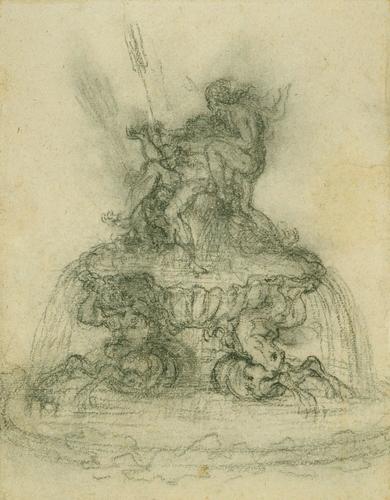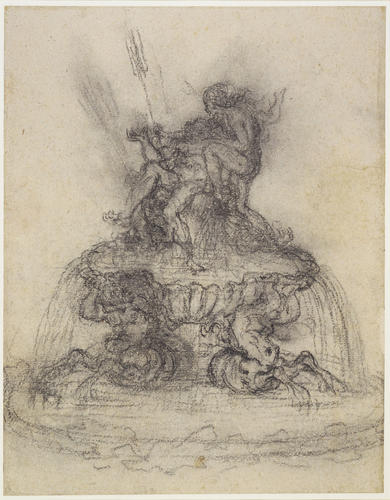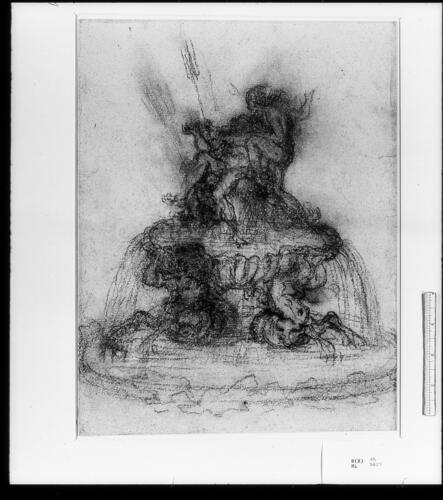-
1 of 253523 objects
A design for a fountain c.1652-3
Black chalk on pale grey-buff paper | 34.0 x 26.4 cm (sheet of paper) | RCIN 905627
-
A black chalk study for the central group for a Fountain of Neptune, commissioned by Francesco d'Este for Palazzo Ducale, Sassuolo (Modena), not executed. The drawing shows Amphitrite trying to steal Neptune's trident; he sits on a shell supported by two sea-centaurs.
Bernini was the outstanding figure of the Italian Baroque, a sculptor, architect, painter and playwright, whose boundless energy, imagination and religious conviction transformed the city of Rome during the course of his seventy-year career. He was called upon to produce far more sculpture than he could ever carve himself, and most works from Bernini’s maturity were carved by others to his designs. This is a rough and repeatedly altered study for a fountain of Neptune, commissioned in 1652 by Francesco d’Este for the courtyard of the Palazzo Ducale at Sassuolo, 10 miles (15 km) south of Modena. Here the lithe Amphitrite climbs a rock to steal the trident of the sprawling Neptune, who dangles his foot in the pool of a huge upturned shell supported by two sea-centaurs. In a second study at Windsor for the same group, their identities are reversed, and it is Neptune who looms over the acquiescent nymph. Two fountains for the site were carved under the supervision of Antonio Raggi, representing a standing Neptune and a marine deity struggling with a dolphin, but no fountain depicting Neptune and Amphitrite was executed.
George III’s two Bernini volumes contained over a hundred drawings. While many of these can now be associated with other artists active in Rome during the seventeenth century, a group of about fifty may be attributed either to the master or to his extensive workshop. Their earlier history is unknown, though it is likely that most came to the King with the Albani collection. The drawings must have been treasured from an early date, for many (though not this one) bear the signs of having been displayed for long periods, with discoloured paper, faded washes and insect damage; and several have been skilfully restored, apparently in the late seventeenth century, with care taken to match the paper used in the restoration and the missing portions of the drawings reconstructed by a talented artist.
Text adapted from Holbein to Hockney: Drawings from the Royal CollectionProvenance
Probably acquired by George III in 1762 as part of the collection of Cardinal Alessandro Albani; first recorded in a Royal Collection inventory of c.1810 (Inv. A, p. 114: 'Designs of Fountains in different parts near and at Rome')
-
Medium and techniques
Black chalk on pale grey-buff paper
Measurements
34.0 x 26.4 cm (sheet of paper)
Object type(s)


